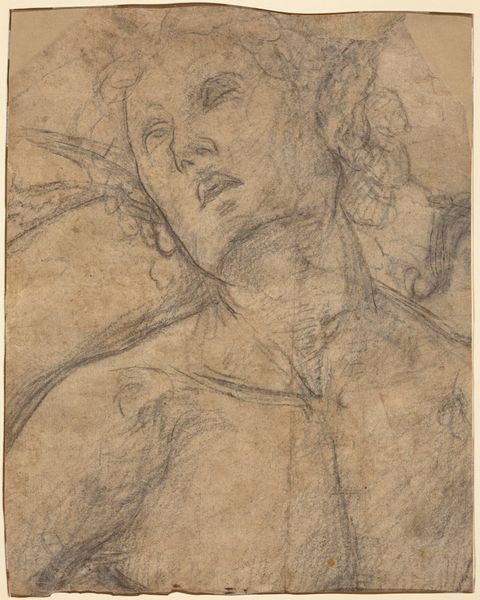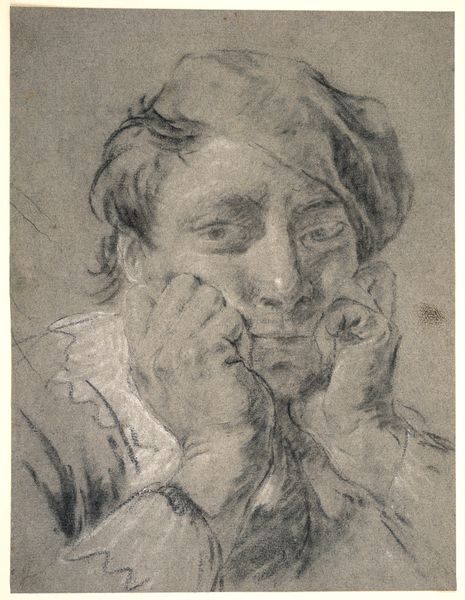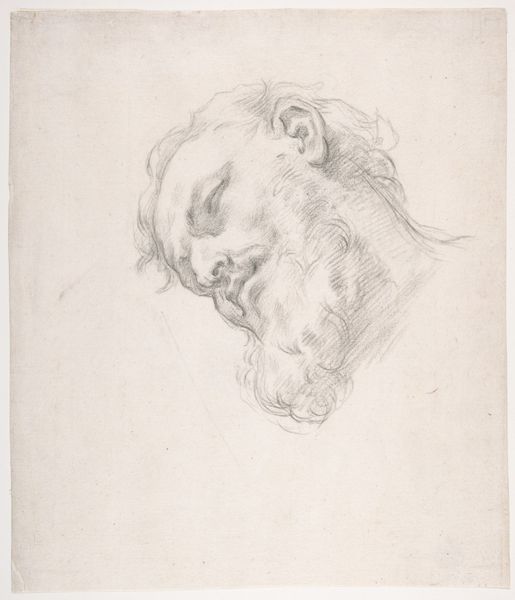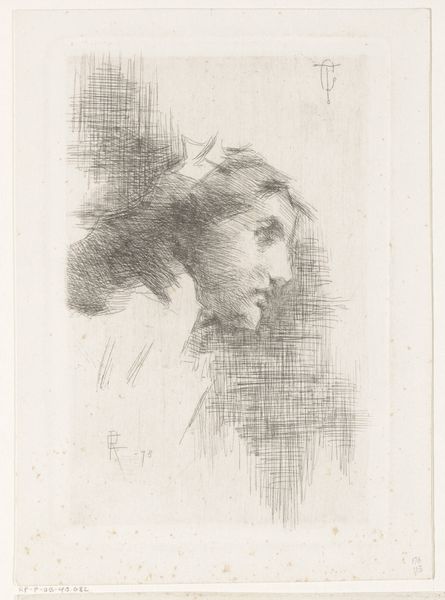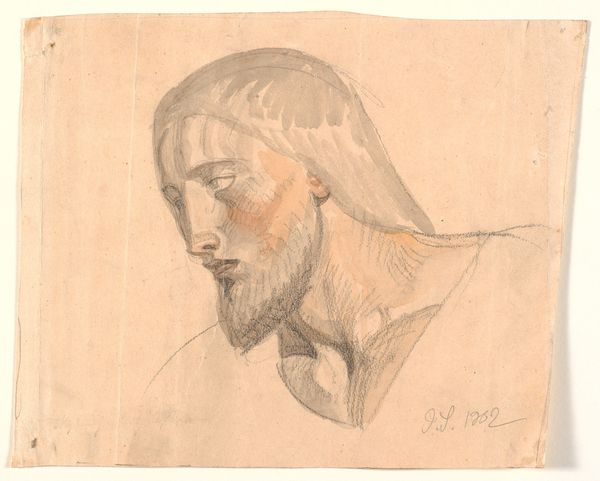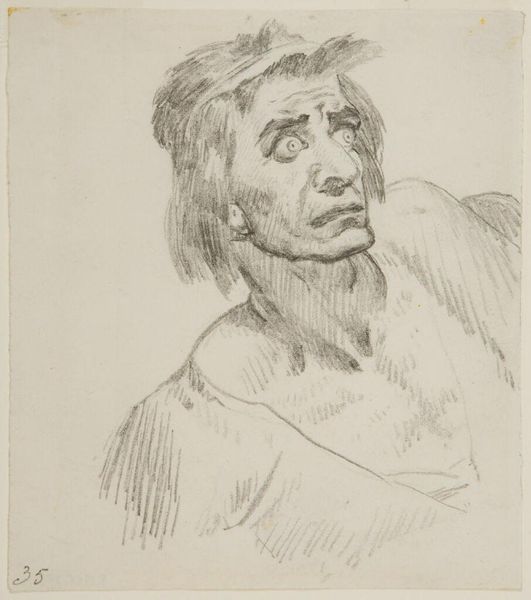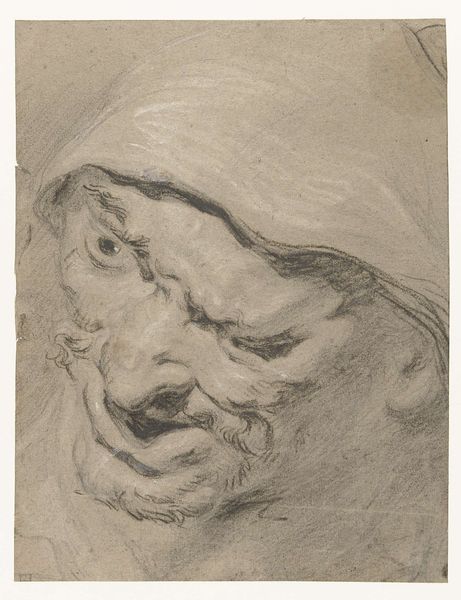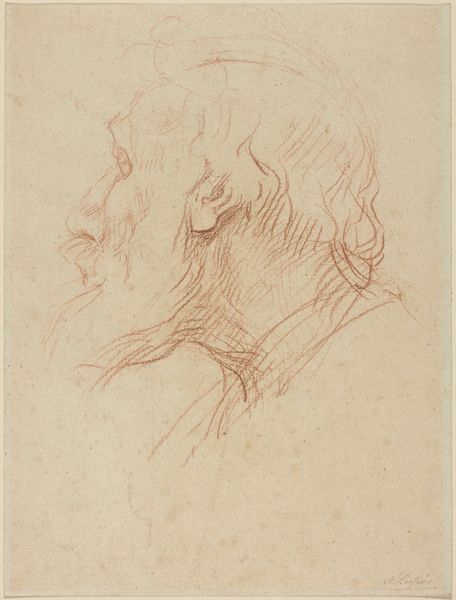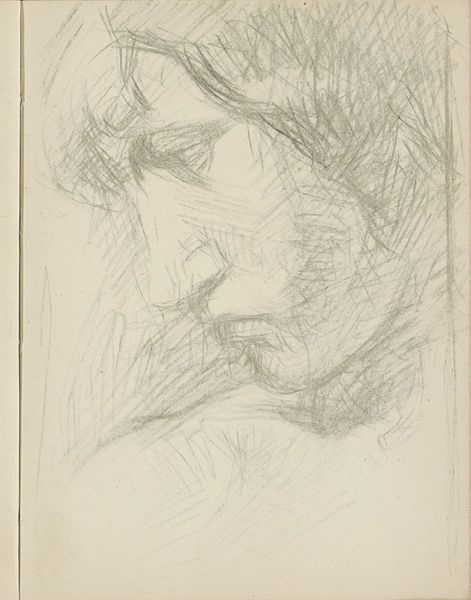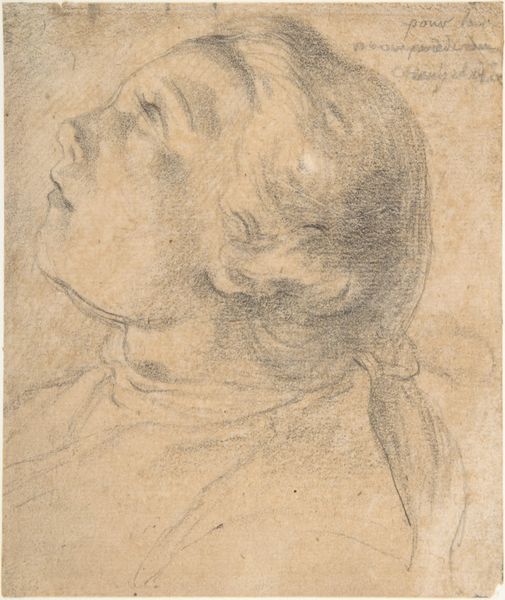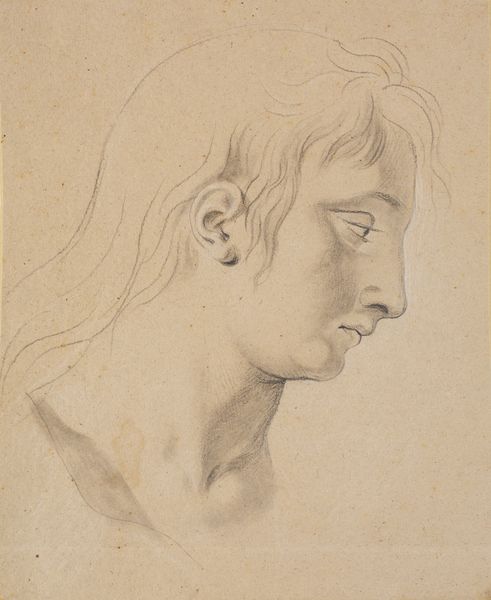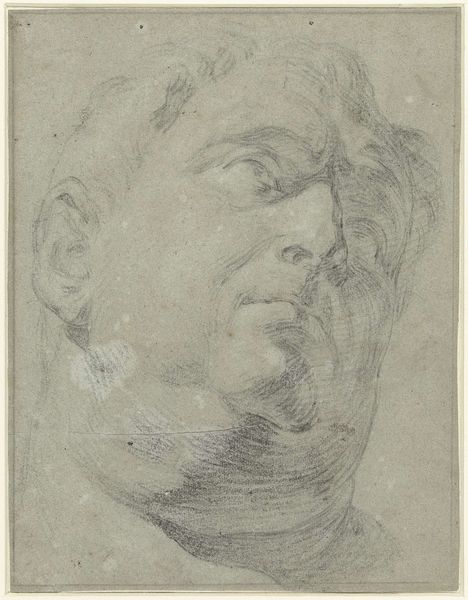
Portrait of a Young Man Leaning on his Hand 1615 - 1625
0:00
0:00
drawing, print, paper, pencil, graphite
#
portrait
#
pencil drawn
#
drawing
# print
#
paper
#
11_renaissance
#
pencil
#
graphite
#
northern-renaissance
Dimensions: 15-3/4 x 11-3/8 in. (40 x 29 cm)
Copyright: Public Domain
Curator: Immediately, this portrait gives me a melancholy vibe. He looks so…internal. Editor: And how perceptive of you! We’re looking at “Portrait of a Young Man Leaning on his Hand,” a drawing attributed to Hans Troschel, likely made between 1615 and 1625. It's a graphite and pencil drawing on paper. A vulnerable moment, beautifully captured, and currently housed at The Metropolitan Museum of Art. Curator: The Northern Renaissance had such a knack for capturing the quiet dignity of… ordinary folk, almost. The way he rests his head – the weight of thoughts visible on his face. The artist isn’t trying to hide anything. He has seen his shadow-self. Editor: That pose, the head resting on the hand, appears frequently in portraiture as an allegorical motif symbolizing melancholy, reflecting a deep, contemplative, even philosophical nature. This motif links back to depictions of Saturn, often linked with artists and thinkers. Is our young man an artist at heart, or touched by the hand of Saturn? Curator: Could be either, or both! It’s the Northern Renaissance, they were pretty good at stuffing symbolism everywhere you looked. But more than symbols, to me the magic lies in the humanity – in those searching eyes. I almost feel I could ask him: “what's troubling you?”. Editor: The loose pencil work emphasizes the transitory nature of feelings; appropriate, as the subject explores interior thoughts that change moment to moment. See how the shading defines his bone structure but never settles fully into a sharp contour? His emotional landscape appears restless and unformed. Curator: Right! It almost makes me think about those unfinished symphonies – like Schubert’s – that are perfect because of their incomplete quality, like that thing we can almost touch, a tantalizing truth or epiphany. The ephemerality gets perfectly encoded into it. Editor: The choice to represent the figure with such raw directness breaks through conventions about how we communicate inner turmoil with portraiture. We recognize and share a kind of psychological and visual intimacy when we view his face, perhaps due to our mutual feelings and lived experiences. Curator: What lingers with me is that sense of profound empathy. Art at its best, I guess, opens the channels. Editor: Precisely. I leave thinking of those continuous threads tying the expression of feelings to depictions of contemplation and emotional truth, through time.
Comments
No comments
Be the first to comment and join the conversation on the ultimate creative platform.
